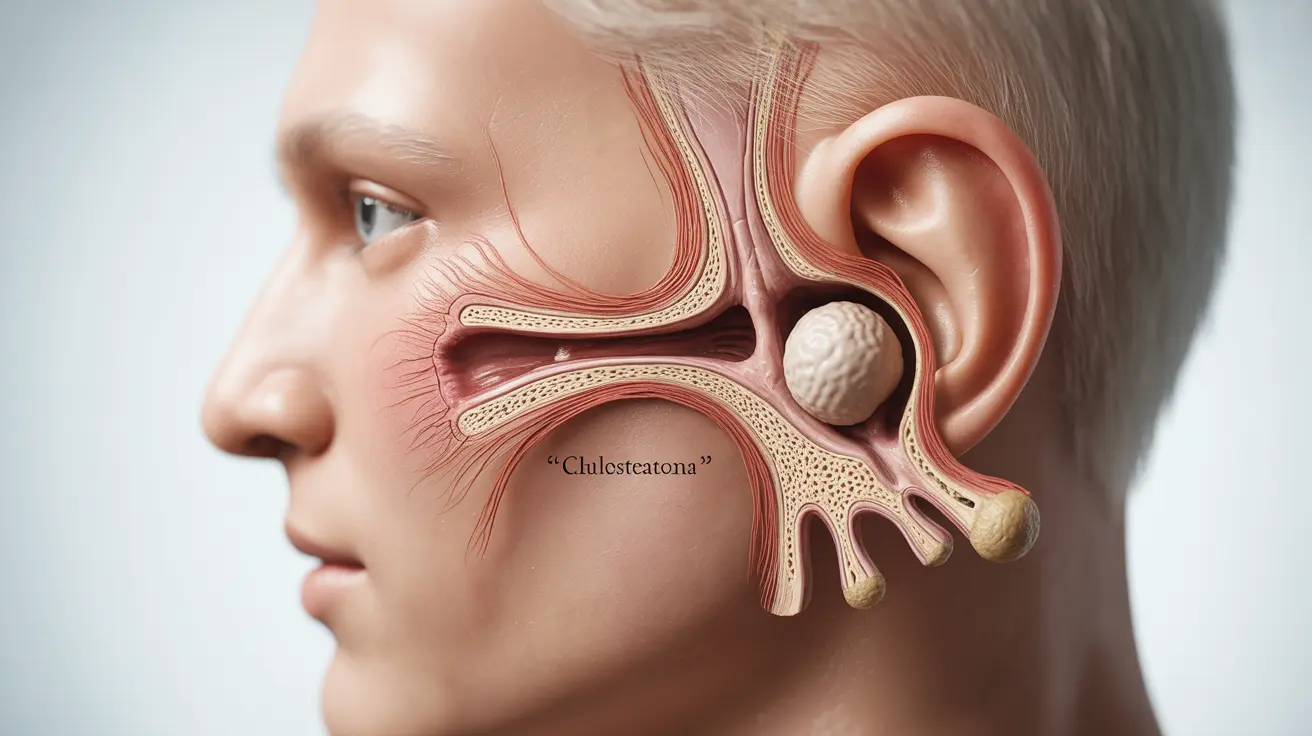A cholesteatoma is a potentially serious abnormal growth that develops in the middle ear, typically consisting of a collection of skin cells and debris. This condition requires prompt medical attention as it can lead to various complications if left untreated. Understanding its symptoms, causes, and treatment options is crucial for anyone affected by or concerned about this condition.
While relatively rare, cholesteatomas can cause significant damage to the structures within the ear and may lead to hearing loss, balance problems, and other complications. Early detection and proper medical intervention are key to managing this condition effectively.
What is a Cholesteatoma?
A cholesteatoma is an abnormal, non-cancerous growth that forms in the middle ear behind the eardrum. This cyst-like growth gradually expands over time, potentially damaging surrounding structures. The condition typically begins when skin cells that should naturally migrate outward instead become trapped and accumulate within the ear.
Signs and Symptoms to Watch For
Early recognition of cholesteatoma symptoms is crucial for timely intervention. Common signs include:
- Persistent ear drainage with a foul odor
- Hearing loss that gradually worsens
- Feelings of pressure or fullness in the ear
- Dizziness or balance problems
- Ear pain or discomfort
- Recurring ear infections
Understanding the Causes and Risk Factors
Several factors can contribute to the development of a cholesteatoma:
Primary Causes
- Chronic ear infections
- Dysfunction of the Eustachian tube
- Previous ear surgery
- Congenital conditions (present at birth)
Risk Factors
- History of repeated ear infections
- Chronic upper respiratory infections
- Genetic predisposition
- Previous ear trauma
Diagnosis and Medical Assessment
Healthcare providers typically diagnose cholesteatoma through a combination of methods:
- Physical examination using an otoscope
- Detailed medical history review
- Imaging studies (CT scan or MRI)
- Hearing tests to assess any impact on auditory function
Treatment Options and Surgical Intervention
The primary treatment for cholesteatoma is surgical removal. Different surgical approaches may be used depending on the size and location of the growth:
Surgical Procedures
- Tympanoplasty
- Mastoidectomy
- Combined approaches for complex cases
The choice of surgical procedure depends on factors such as the extent of the growth, degree of damage, and overall patient health.
Recovery and Post-Surgical Care
Recovery from cholesteatoma surgery typically involves:
- Regular follow-up appointments
- Keeping the ear dry
- Taking prescribed medications
- Avoiding strenuous activities
- Careful cleaning and maintenance as directed by the surgeon
Frequently Asked Questions
What are the symptoms of a cholesteatoma and how is it diagnosed? A cholesteatoma typically presents with symptoms such as persistent ear drainage, hearing loss, and ear pressure. Diagnosis involves a physical examination, imaging studies, and hearing tests performed by an ENT specialist.
What are the most common causes of a cholesteatoma and how can it be prevented? Cholesteatomas commonly develop from chronic ear infections, Eustachian tube dysfunction, or can be present at birth. Prevention focuses on prompt treatment of ear infections and maintaining good ear health.
How is a cholesteatoma typically treated, and what are the benefits of surgery? Surgery is the primary treatment for cholesteatoma. The benefits include preventing further damage to ear structures, improving hearing when possible, and eliminating the risk of serious complications.
What are the potential complications of untreated cholesteatoma, and how can they be managed? Untreated cholesteatomas can lead to permanent hearing loss, facial nerve paralysis, meningitis, and brain abscess. Early intervention and regular monitoring are essential for managing these risks.
How long does it take to recover from cholesteatoma surgery, and what post-operative care is required? Recovery typically takes 4-6 weeks. Post-operative care includes keeping the ear dry, taking prescribed medications, attending follow-up appointments, and following specific cleaning instructions from your surgeon.




